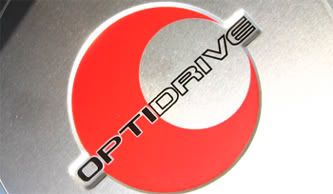What is everyones opinion on spark plugs for the Ecotec? I'm running Bosch Platinum +4's and they don't seem to be much better performance than the stockers. Anyone use Denso or NGK?
We Ride Together, We Die Together...... J-Bodies For Life!
SPONSORED BY: Showstopper Tuning, JM Graphics
2003 Cavalier LS Sport "SHOCKWAVE"
thats because of the +4 part. delco or ngk replacements should be the only plug used.
El fuego (the grounded one) wrote:The problem with indexing plugs is that if you look at each plug, where the the threads are as opposed to the tip, they are almost always not congruent with each other. Instead of rummaging through boxes of spark plugs to find the elusive combination of perfect plug threads that match the cylinder head threads, use indexing washers. These soft copper washers are available from the aftermarket and will fit both flat- and tapered- seat spark plugs. They're available in three thicknesses: 0.060-inch, 0.080-inch and 0.100-inch. Copper's inherent softness along with the various washer thicknesses make it simple to thread the spark plug into the cylinder head and tighten it to the point that the index mark is situated in the correct position relative to the combustion chamber. (Never double up washers; they aren't intended to be used in tandem.)
Generally speaking, the idea of indexing is to position the spark plug so that its gap is facing the center of the cylinder, angled slightly toward the exhaust valve—the most common arrangement. (Some engines work better with other gap locations.) This is important because, as the piston approaches TDC, the air/fuel charge is being compressed. The charge or "mixture" is being forced toward the area of the spark plug—and normally, the exhaust valve. The true speed of this force inside the combustion chamber is extremely fast. Some experts speculate that it surpasses supersonic speeds.
Because of this, the spark generated from the plug should be in a "position" to create the best possible flame front. Looking at a typical side-gap spark plug, you'll note that the electrode can actually block the flame process. On the other hand, if the electrode gap faces the on-rushing air/fuel charge, it stands a much better chance of igniting a flame front.
So NO 2 PRONG, 3 PRONG, 4 PRONG, etc.
http://www.j-body.org/forums/read.php?f=2&i=363267&t=363251
Edited 1 time(s). Last edited Sunday, March 04, 2007 2:03 PM
 JBO Stickers! Get yours today!
JBO Stickers! Get yours today!

